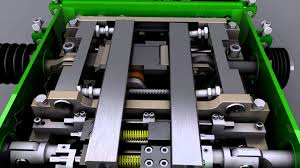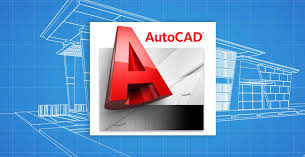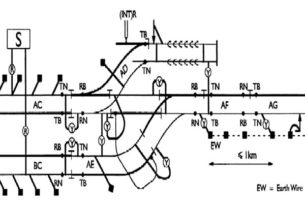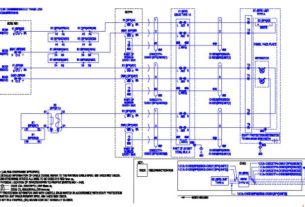Point Machine Railway Presentation
It is a term used to describe the arrangement of rails that allow junctions to be made in the track. In simple terms arrangement of rails where two lines converge or diverge on a track.
Components of Point Layout.
Stock rails – 2
Switch Rail- 2
Gauge tie plate -1
Nose Crossing Plate -1
Tie bar leading -1
Following tie bars – depends on the type of lay out and length of switch, Nose crossing.
What is setting of points?
One of the switches housing with the nearest stock rail and the other switch maintaining a gap with other stock rail.
Switch which is housing with stock rail is called closed switch.
Switch which is maintaining a gap with the stock rail is called open switch.
Setting is said to be Normal or Reverse depending upon their usage.
Settings are also described as.
LHNC – Left-Hand side Normally Closed
RHNC – Right Hand side Normal Closed
Points are described as facing or trailing depending on the direction of traffic.
Points with a single switch which are used to derail the vehicle are called trap points.
What is the locking of points?
Points are held in the set position by mechanical means which ensures safe passage of train.
What are the parameters to be maintained for their proper setting of a point ?
When they are set, the gap between the closed switch and the stock rail should be less than 3.5mm. Opening between the open switch and stock rail should be 108mm.
All the mechanical fittings at the point should be tight.
Track gauge should be 1.43 m.
Variation in the track gauge should be within tolerable limits.
How they are operated ?
Electrical Operation
Mechanical Operation
Local lever – Lever is provided by the side of point and connected by drive rod. Locking may be there or may not be there.
Locking of points where required is done by a locally operated Facing point lock.
Generally this type operation is adopted in shunting yards or sidings where the trains move at 5 mph or less.
Through Rodding –
Points are operated from a distance either from a local frame or from a Signal cabin.
Channel rods of size 1 5/8 X 1 ¼ are connected to the lever. Transmission is taken through cranks and compensators upto the point and connected. On Indian Railways 1 ¼ dia Iron rods are used.
Point Locking is done by Facing point Locks. The locking plunger is operated similar way by channel rodding from the same place from where the point is operated.
Double wire operation –
Point is operated through a mechanism which is connected to the lever through two wires which are maintained in constant tension.
When the lever is operated the wires operate the Mechanism. Mechanism drives the points and also locks the points. Once this method was widely used on Indian Railways.
With increasing electrical signaling this method is becoming obsolete slowly.
British Railways never used this system. Maximum range of operation was 650 yds.
Locking is by Facing point Lock.
Detection may be either through Mechanical means or Electrical means In present day signaling Mechanical operation is a non preferred option.
Disadvantages in mechanical arrangements –
Restrictions on range of operation.
Mechanical gears require frequent maintenance.
Frequent adjustments due temperature variations.
Susceptible to failures due to external interference.
Susceptible to failures due to wear and tare.
Electro Mechanical –
In Electro Mechanical yards generally points are operated by mechanical means and signals are electrical lit color light signals.
Mechanical operation of points is slowly phased out with electrical operation.
What is Slip Siding or a Catch Siding?
In case of heavy gradients raising or falling, it becomes necessary to protect the station yards as well as block section from slipping away vehicles.
Slip sidings are provided to protect the block sections
Catch sidings are provided to protect the station yards.



